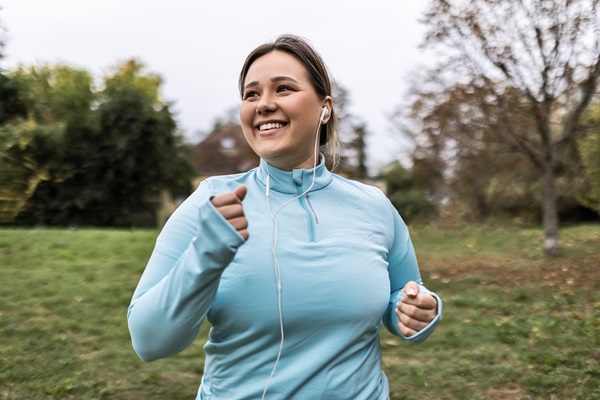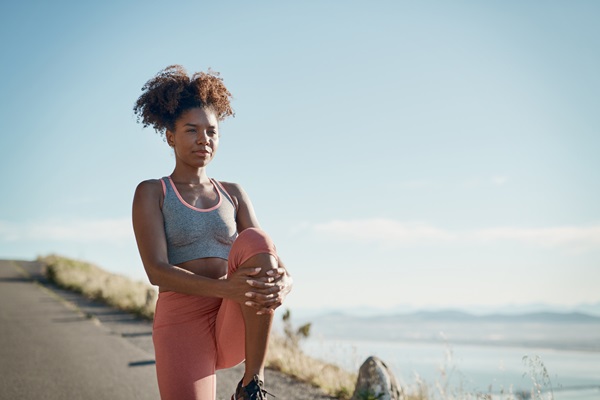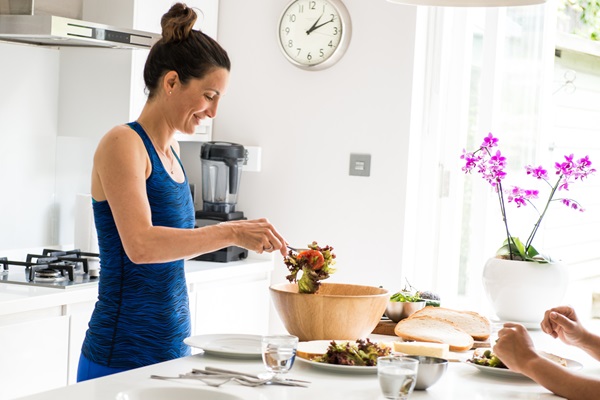-
The sun’s out, your playlist’s on, and you’re just hitting your stride when it starts, that unmistakable, unwelcome jiggle. Few things can ruin a run faster. And here’s the painful truth, according to Breast Research Australia, your breasts aren’t just moving a little, they can bounce up to 10,000 times in a single hour of running, and move as much as 10 centimetres. That’s a lot of wobble to just shrug off.
“Every time your foot hits the ground, your breasts also bounce,” says Professor Deirdre McGhee, Co-Founder and Director of Breast Research Australia. “For some women, breast bounce can cause breast discomfort or pain. It can also change the posture of the upper body, affecting shoulder range of motion and running efficiency,” she explains. “Excessive breast movement, breast pain and changes to upper body posture can limit participation, athletic performance, and enjoyment of physical activity and sport.”
Pain you shouldn’t ignore
Breast pain while running is so common, it’s practically a team sport, but it shouldn’t be. Up to two-thirds of women say breast discomfort interferes with their sport, and nearly a third of female marathon runners report mastalgia (breast pain). McGhee says many quietly accept it or stop exercising altogether, something she and her team are determined to change.
Two common types of breast pain that active women experience include:
- Exercise-induced mastalgia
Triggered by excessive movement, affecting up to 72% of active women. - Cyclic mastalgia
Linked to the menstrual cycle, flaring up a few days before a period and affecting both breasts.
What you can do about it
The good news? You don’t have to just put up with discomfort. Simple steps can make a big difference.
- Track your symptoms
Knowing whether your pain is caused by excessive breast movement or your monthly cycle (hormones) can help you find the right fix. - Upgrade your kit
A properly fitted, high-support sports bra can reduce or resolve both exercise-induced and cyclic mastalgia. - Seek medical advice
Seek help from your GP if your breast pain is not relieved through improved breast support.
Your bra is as important as your runners
Feeling comfortable and confident in your sports bra can push you to go the extra mile or simply help you enjoy your run more. By reducing breast bounce, a well-fitted, high support sports bra can limit or resolve breast pain, chafing of the skin underlying your bra and embarrassment over the appearance of excessive breast movement. It can also make running or exercise more comfortable and enjoyable.
When your mind is free from worrying about discomfort, jiggles or straps that are digging in, you can focus on running your best, whether that’s sprinting across the finish line or just pounding the pavement in your neighbourhood.
So what does supportive actually mean?
Professor McGhee recommends to start with these basics:
- Bra band: Made of strong elastic that is firm around your trunk and stays in place when you lift your arms.
- Bra cup: High neckline to cover all of your breasts, with no bulging of breast tissue at the side or front of the cup and no wrinkles in the fabric or gaps between your breast and the cups.
- Bra straps: Wide, comfortable straps that don’t slip off or dig in.
- Bra material: Smooth, chafe-free fabric, that wicks sweat away (does not stay wet).
- Bra underwire: This is a personal choice, but if you use it, it must sit on the bone (breast bone and ribs), not breast tissue.
- Bra support: Assessed via breast pain and breast movement: On a 0–10 scale (0 is no pain, 10 is severe pain), you want a 0. On a 0–10 scale (0 is no bounce, 10 is the bounce you would have with no bra), you want no more than a 2–3.
To find out more about properly fitting yourself, visit the Sports Bra Tool.
Larger breasts, greater force
The heavier the breasts, the more momentum and force they generate, which can increase movement and exacerbate pain and discomfort. High support sports bras that are properly fitted decrease and limit the impact of breast bounce. For women with larger breasts, McGhee even recommends layering two bras for adequate support during high impact sports like running.
Don’t let discomfort cut your run short
Your run should be about finding your rhythm, not fighting pain. Managing breast discomfort, whether by understanding your cycle or choosing the right support, can help you feel comfortable and confident every time you hit the road. And remember, a good sports bra isn’t just a fashion accessory, it’s essential gear. As McGhee puts it, “We don’t want women to give up on being active because of something that could be fixed.” Support your breasts properly, and next time the sun’s out and your playlist’s perfect, the only bounce you’ll notice is the one in your step.
Where to get help
Read more about finding the right sports bra.
The Sports Bra Tool, created by Professor Deirdre McGhee and Emeritus Professor Julie Steele, guides women through choosing the right sports bra for your breast size, age and activity. Supported by the Australian Institute of Sport, it’s free, easy to use and aims to arm women of all ages and breast sizes with the knowledge they need to stay active and comfortable.
If breast pain persists, talk to your GP.
READ MORE: Training? Here’s how to get your nutrition right or explore more women's health articles
The Medibank Better Health Research Hub has partnered with and provided funding towards La Trobe University’s TRAIL W project. Find out more here: MBHRH Research Projects and Partnerships | Medibank and Trail W – HerSport. - Exercise-induced mastalgia
Don't let breast pain ruin your run


Earn up to $400 worth of rewards every year!^
Earn points for tracking your every day healthy actions such as eating, walking, stretching... and even sleeping.
^ Medibank Live Better Challenges & Goals Earning Policy: The participant of a Medibank Live Better Challenge or Goal may not receive Live Better points or may have their already credited Live Better points reversed in accordance with the Medibank Live Better terms and conditions. To earn Live Better points, the participant needs to properly complete 100% of the eligible Challenge according to the instructions. The number of Live Better points available for Medibank Live Better Challenges and Goals is subject to change without prior notice. The maximum number of Live Better points that each Medibank Live Better member can earn from successfully completing health and wellbeing Challenges, Goals or any Onboarding action in a calendar year is 40,000 Live Better points. To the extent of any inconsistency between this Policy and the Medibank Live Better terms and conditions, the terms and conditions will take precedence.


